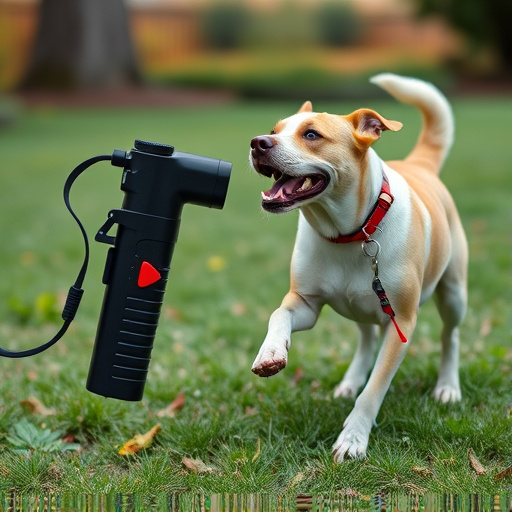Dog spray, a capsaicin-based deterrent, irritates dogs' sensory areas from a safe spraying distance of 3-5 meters (10-16 feet). Key steps include adherence to manufacturer instructions, strategic targeting of sensitive areas, and post-exposure care. Thorough washing with cold water alleviates discomfort, and medical attention is advised for severe symptoms or chemical ingress past recommended distances.
Staying safe while encountering aggressive dogs is paramount. Dog spray, a non-lethal deterrent, offers powerful protection when used correctly. This guide breaks down the essentials of self-defense against dog attacks, focusing on understanding canine spray composition and effectiveness. We’ll explore the optimal safe spraying distance for dogs and crucial application techniques to ensure your safety. Additionally, post-exposure care instructions are provided for managing irritations and knowing when medical attention is necessary.
- Understanding Dog Spray: Its Composition and Effectiveness
- Safe Distance and Application Techniques for Effective Self-Defense
- Post-Exposure Care: Washings, Irritations, and Seeking Medical Attention
Understanding Dog Spray: Its Composition and Effectiveness
Dog spray, also known as canine repellant or anti-aggression spray, is a powerful tool designed to deter aggressive dog encounters. Understanding its composition and effectiveness is crucial for safe usage. This spray typically contains capsaicin, the same compound found in chili peppers, which irritates a dog’s eyes, nose, and throat, causing them to back away temporarily. The active ingredient is usually mixed with water and other additives to enhance projection and stickiness on fur.
The safe spraying distance for dogs varies depending on the brand and type of spray, but generally, it’s recommended to keep a 3-5 meter (10-16 feet) gap between you and the dog. This allows for effective application while maintaining safety. Always follow the instructions provided by the manufacturer, as different sprays may have specific guidelines regarding usage, storage, and disposal. Proper handling is essential to ensure both your well-being and the effectiveness of the spray in deterring aggressive dog behavior.
Safe Distance and Application Techniques for Effective Self-Defense
Maintaining a safe distance is crucial when employing self-defense against dog spray. It’s recommended to stay at least 10–20 feet (3–6 meters) away from the dog, giving yourself ample time to react and avoid direct contact. This distance allows for strategic planning without escalating the situation. When applying self-defense spray, aim for the dog’s eyes, nose, and mouth—sensitive areas that can temporarily disable its senses and deter aggressive behavior. Move quickly but calmly, ensuring the wind is blowing away from you to maximize the spray’s effectiveness and minimize exposure. Practice these techniques in controlled environments to familiarize yourself with their application and improve your timing, enhancing your ability to defend against dog attacks effectively while maintaining safety.
Post-Exposure Care: Washings, Irritations, and Seeking Medical Attention
After coming into contact with dog spray, post-exposure care is crucial to ensure safety and minimize discomfort. The first step is to wash the affected area thoroughly with cold water. This helps to remove any residual chemicals from the skin or clothing. For eyes, flush them gently for at least 15 minutes using clean water if exposure has occurred.
Irritations may vary from mild redness and stinging to severe burning sensations. If symptoms persist or worsen, it’s important to seek medical attention promptly. A healthcare professional can assess the severity of the reaction and provide appropriate treatment, especially for any underlying health conditions. Remember that even a safe spraying distance for dogs (as recommended by experts) can still cause issues if chemicals get into eyes or mouth, or are absorbed through broken skin.
Knowing how to effectively use dog spray can significantly enhance your safety when facing an aggressive canine. By understanding its composition, mastering safe spraying techniques at the appropriate distance, and knowing what post-exposure care is required, you’ll be well-equipped to defend yourself. Remember, always choose a can with a strong stream and a range that allows for safe distance (typically 20-30 feet), ensuring the spray lingers long enough to deter the dog. With proper training and preparation, you can confidently navigate potential dog encounters, remaining calm and in control.
